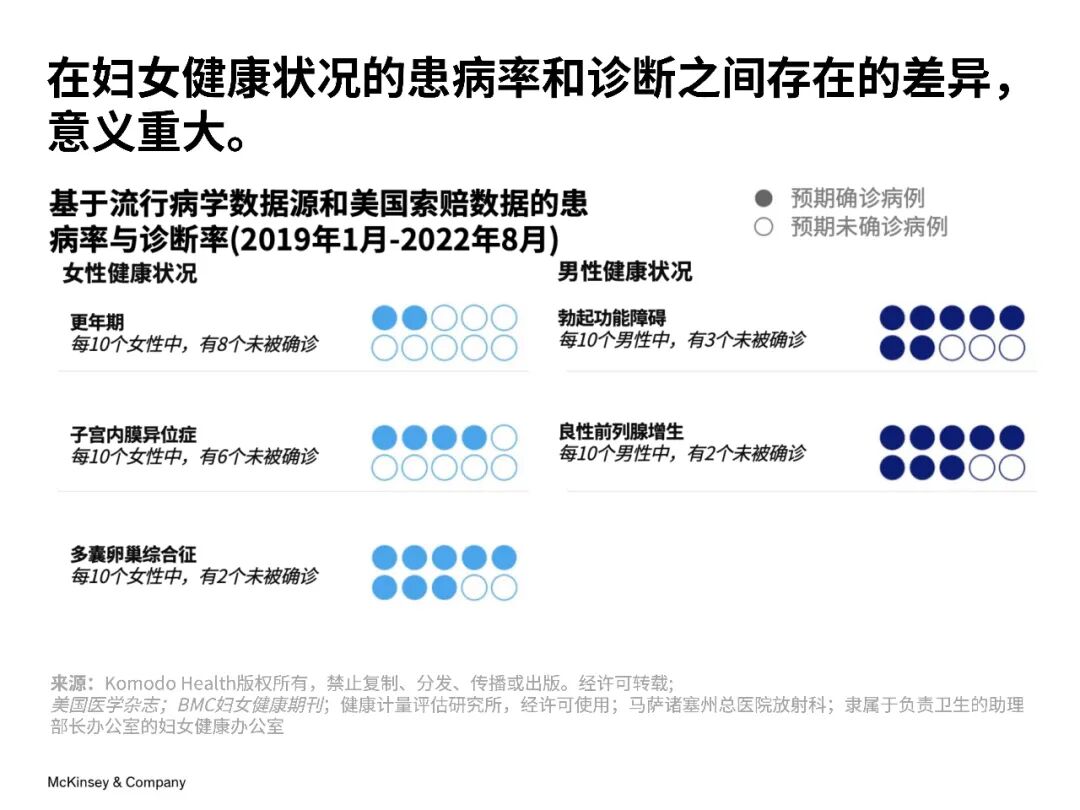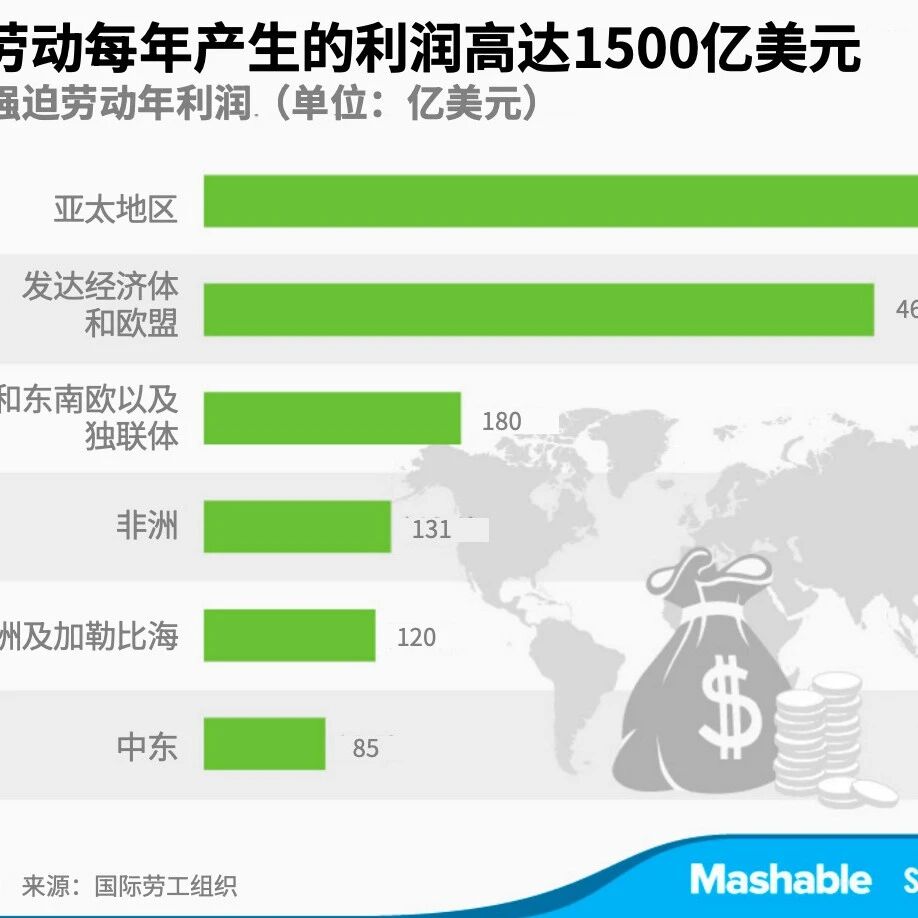There are persistent disparities in health.Compared to men, certain diseases are still underdiagnosed in women.
Image source:Unsplash/Towfiqu barbhuiya
Kate Whiting
Senior Writer for the Forum Agenda
According to a report by the World Economic Forum and the McKinsey Health Institute, women spend 25% more time over their lifetimes dealing with health issues compared to men.
There is a persistent data gap in health. Compared to men,Certain diseasesDiagnosis for women remains inadequate.
Here are the gender health disparities you need to know, along with six scenarios that highlight these gaps.
Although the world has achieved significant milestones in gender equality in recent years, much remains to be done—particularly when it comes to gender health disparities.That’s why understanding this gap is so crucial—and here are six scenarios that highlight it.How significant are gender health disparities?Gender health disparities are linked to inequities in healthcare access between men and women. These gaps can manifest in various ways, ranging from access to medical services to research opportunities.The gender health gap equates to women collectively losing 75 million years of life each year due to poor health or premature death. Closing this gap would give today’s 3.9 billion women an additional 7 healthy days per year—translating to an extra 500 healthy days over their lifetime, on average.This gap could also have significant economic implications. For instance, according to McKinsey data, in 2020, just 1% of healthcare research and innovation funding was directed toward women-specific diseases outside of oncology. Yet, the same study reveals that the forum and the McKinsey Global Institute for Health estimate that every dollar invested in women’s health could generate approximately $3 in economic growth.The report, "Closing the Gender Health Gap: A Trillion-Dollar Opportunity to Improve Lives and Economies," highlights that narrowing this gap could boost global GDP by up to $1 trillion by 2040—driven by reduced premature deaths and improved health outcomes, as well as enhanced economic and societal contributions from women.Gender health disparities begin to emergeA new study reveals that doctors tend to approach pain differently when treating men and women. The research found that women are 10% less likely than men to receive a pain assessment upon arriving at the hospital. Additionally, women wait about half an hour longer for medical attention compared to men, and doctors are also less likely to prescribe pain medication to female patients.Co-author of the study, Alex Gileles-Hillel, attributes this disparity to a long-standing and unverified bias: "When women complain of pain, they’re often dismissed as exaggerating or hysterical, while men are perceived as being more stoic," he told Nature magazine.In 2019, a Danish study involving nearly 7 million people found that, on average, women were diagnosed with hundreds of health conditions four years older than men.Diabetic patients typically receive a diagnosis after four and a half years, while female cancer patients are diagnosed, on average, two and a half years later.Researchers speculate that genetic and environmental factors may be at play, but gender bias could also partially explain this disparity.Søren Brunak, the lead author of the study and a researcher at the University of Copenhagen, told NBC News that the finding was surprising: "Men typically tend to delay seeing a doctor… so it’s reasonable to assume that the differences in incidence rates could be even greater."In the same year, British journalist Caroline Criado Perez published her book *Invisible Women: Exposing Data Bias in a World Designed for Men*, shedding light on the gender gap in healthcare data. For instance, in 31 congestive heart failure clinical trials conducted over 15 years, the ratio of male to female participants was 3:1.“For thousands of years, medicine has assumed that the male body represents all of humanity,” Caroline Criado Perez told the UK’s Evening Standard. “As a result, we’re left with a massive historical data gap when it comes to the female body. Women are dying, and the medical community shares responsibility—it needs to wake up.”The following year, the COVID-19 pandemic disrupted healthcare services worldwide, with women being particularly hard hit.In January 2024, the World Economic Forum launched the Global Women’s Health Coalition in Davos, aiming to transform funding and priorities for women’s health and bridge the gender gap in healthcare.In the United States, women's health conditions are not adequately diagnosed.
Image source:McKinsey
This research was supported by a study funded by the Bill & Melinda Gates Foundation, which was published in The Lancet in May 2024. The study also found that women live longer than men—but they spend more of their lives in poor health compared to men.Like the McKinsey study, this research used Disability-Adjusted Life Years (DALYs) to quantify health disparities. The study found that women are more likely than men to suffer from lower back pain, depression, and headaches, while men have higher DALY rates for diseases driven by mortality—namely COVID-19, road injuries, and ischemic heart disease.The report concluded: "Significant health disparities between women and men highlight the urgent need for policies tailored to gender- and age-specific data.""Continuing to promote gender-sensitive research is also crucial, and ultimately implementing interventions will not only help alleviate the burden of disease but also foster greater health equity."These six diseases highlight gender health disparities.Closing the gender health gap means improving the diagnosis of women's health conditions. Here are six underdiagnosed diseases:British women are about one-third less likely to undergo coronary angiography—a procedure that allows doctors to visualize narrowing or blockages in the arteries—after experiencing a STEMI heart attack (primarily caused by heart disease).A study published in *The Lancet Regional Health – Europe* found that women are more likely to die after being hospitalized for a severe heart attack—but they are also less likely to be prescribed preventive medications for future heart attacks, such as statins.Previous research has found that women are 50% more likely than men to receive a misdiagnosis after a heart attack.Dr. Sonya Babu-Narayan, Deputy Medical Director and cardiologist at the British Heart Foundation, told The Times: "Deep-rooted inequalities mean that women are not receiving adequate diagnosis and treatment, nor are they accessing sufficient services."Endometriosis is often called the "neglected disease" because it remains poorly understood by many, and diagnosis rates remain low.Globally, the condition affects 10% of women and girls of childbearing age—but in the U.S., for instance, only about two out of ten cases are actually diagnosed, with the average diagnostic delay stretching over seven years or more. For Black women, the wait to receive a diagnosis is even longer.American filmmaker, lawyer, and activist Shannon Cohn recently directed the documentary *Below the Belt*, shedding light on this issue—and shared her own experiences on the Davos Radio podcast during the forum.Shannon Cohn first experienced these painful symptoms at the age of 16, but for the next 13 years, healthcare providers didn’t believe her—they told her her symptoms were either imaginary, specific to women, or that she was simply exaggerating.Research shows that boys diagnosed with autism are three times more numerous than girls, and girls often receive a diagnosis later than boys—or sometimes not at all—potentially leading to mental health issues in adulthood.Medical gender bias leads to misdiagnoses in women, as girls often don’t exhibit the same behaviors and symptoms as boys—and they may even learn to conceal or "mask" behaviors that don’t align with societal norms.Clinical psychologist Karen Saporito says: "Since women often mask and resist typical autism traits, patients and their families must continually educate others and advocate for themselves—or their children—to ensure they receive the treatment, support, and care they deserve."Amira Ghouaibi, head of the World Economic Forum's Women's Health Initiative, believes that further research is needed into why women's healthcare needs remain unmet—before gender equality in health can be achieved.“Every woman should have access to high-quality care—when and where she needs it. We can only achieve this goal by first examining the current state of health disparities among women, identifying the most significant gaps, and then using this insight to develop strategies and policies that improve women’s health outcomes.”4. Attention Deficit Hyperactivity DisorderAnother neurodevelopmental disorder that often co-occurs with autism is attention-deficit/hyperactivity disorder (ADHD), which is equally prone to misdiagnosis or missed diagnosis in women. Research shows that in the United States, fewer than 1% of women are currently diagnosed with ADHD—though this number is rapidly increasing.A 2023 data analysis revealed that between 2020 and 2022, cancer diagnosis rates among women aged 23 to 49 nearly doubled. The study noted that these findings align with research indicating women often receive cancer diagnoses later than men.Like autism, ADHD symptoms manifest differently in women, yet historically, research has primarily focused on boys with the condition.The study indicates that the gap between women and men in diagnosis is narrowing: "While men are still more likely to be diagnosed with ADHD than women, this disparity has narrowed over the past 12 years.""During this period, the ratio of men diagnosed with ADHD compared to women dropped nearly fivefold—from men being 133% more likely than women to be diagnosed with ADHD in 2010 to men now being 28% more likely in 2022."Autoimmune diseases are conditions in which the body's immune defense system mistakenly attacks its own tissues, including lupus, psoriasis, multiple sclerosis, rheumatoid arthritis, and thyroid disorders.Following cancer and heart disease, they are the third most common category of illnesses.According to data from the American Autoimmune Association, women make up the majority of autoimmune disease patients (80%), yet it takes them an average of five years to receive a diagnosis.Recent U.S. research highlights why more funding is needed to study diseases that affect women more significantly than men.Scientists at Stanford University have discovered evidence of a molecule—Xist—that exists exclusively in women. This molecule triggers a chemical reaction that serves as a hallmark of autoimmune diseases, potentially explaining why these conditions are more common among women.Although potential treatments may still be far off, Jeffrey Sparks, deputy physician and director of Immuno-Oncology and Autoimmunity at Brigham and Women’s Hospital—who was not involved in the study—told The Washington Post: "The potential here is limitless... Once you understand the underlying mechanisms, you can start thinking about developing therapies, early detection methods, and even preventive strategies."6. Antimicrobial ResistanceIt is estimated that by 2050, antibiotic resistance (AMR—when parasites, bacteria, and viruses evolve to become resistant) could lead to approximately 10 million deaths annually. The World Bank estimates that the resulting surge in healthcare costs will reach as high as $1 trillion.According to the Financial Times, the World Health Organization's latest research indicates that women are more likely than men to come into contact with these so-called superbugs.The reasons for this situation are diverse, including the fact that women are more likely to take antibiotics throughout their lives, as well as being more frequently employed in healthcare roles (exposing them to pathogens). They also face a higher risk of pathogen exposure during childbirth in non-sterile environments. Additionally, women in low- and middle-income countries often lack adequate sanitation facilities, or may come into contact with bacteria in water while performing household chores.The World Health Organization urges countries to collect and share gender-specific data when monitoring antimicrobial resistance infections.The above content represents the author's personal views only.This article is translated from the World Economic Forum's Agenda blog; the Chinese version is for reference purposes only.Feel free to share this on WeChat Moments; please leave a comment below the post if you’d like to republish.
Editor: Wang Can
The World Economic Forum is an independent and neutral platform dedicated to bringing together diverse perspectives to discuss critical global, regional, and industry-specific issues.
Follow us on Weibo, WeChat Video Accounts, Douyin, and Xiaohongshu!
"World Economic Forum"






